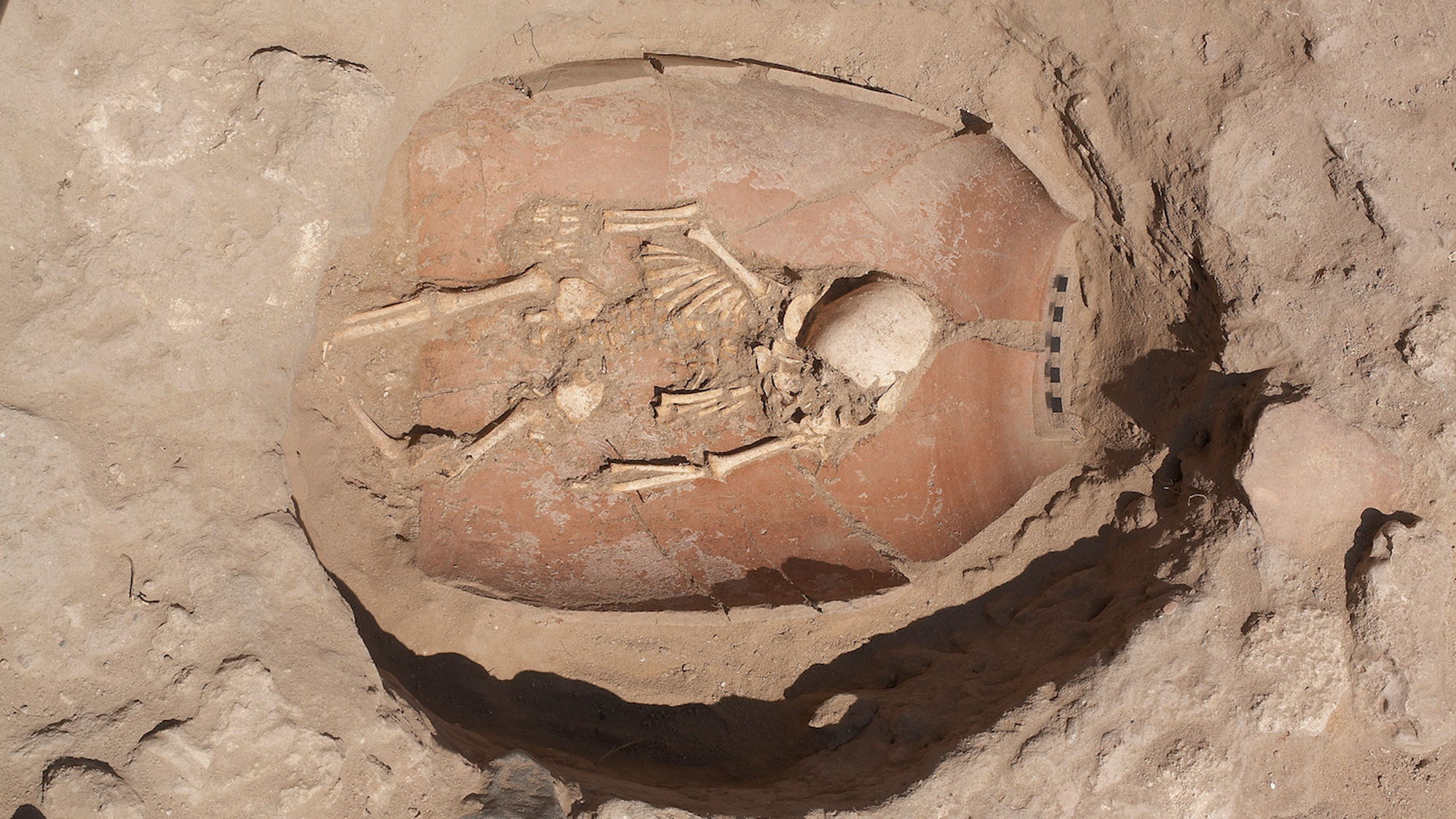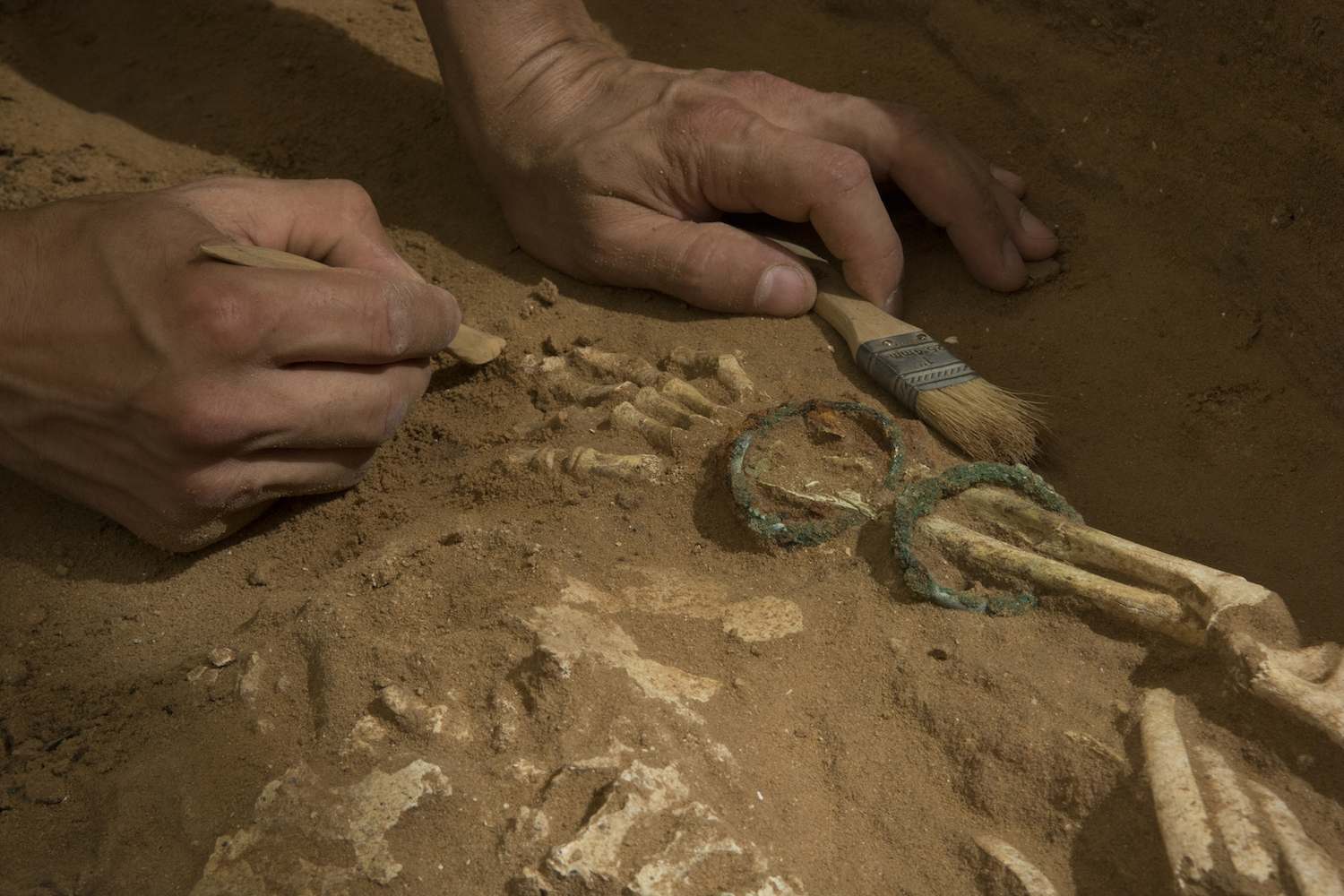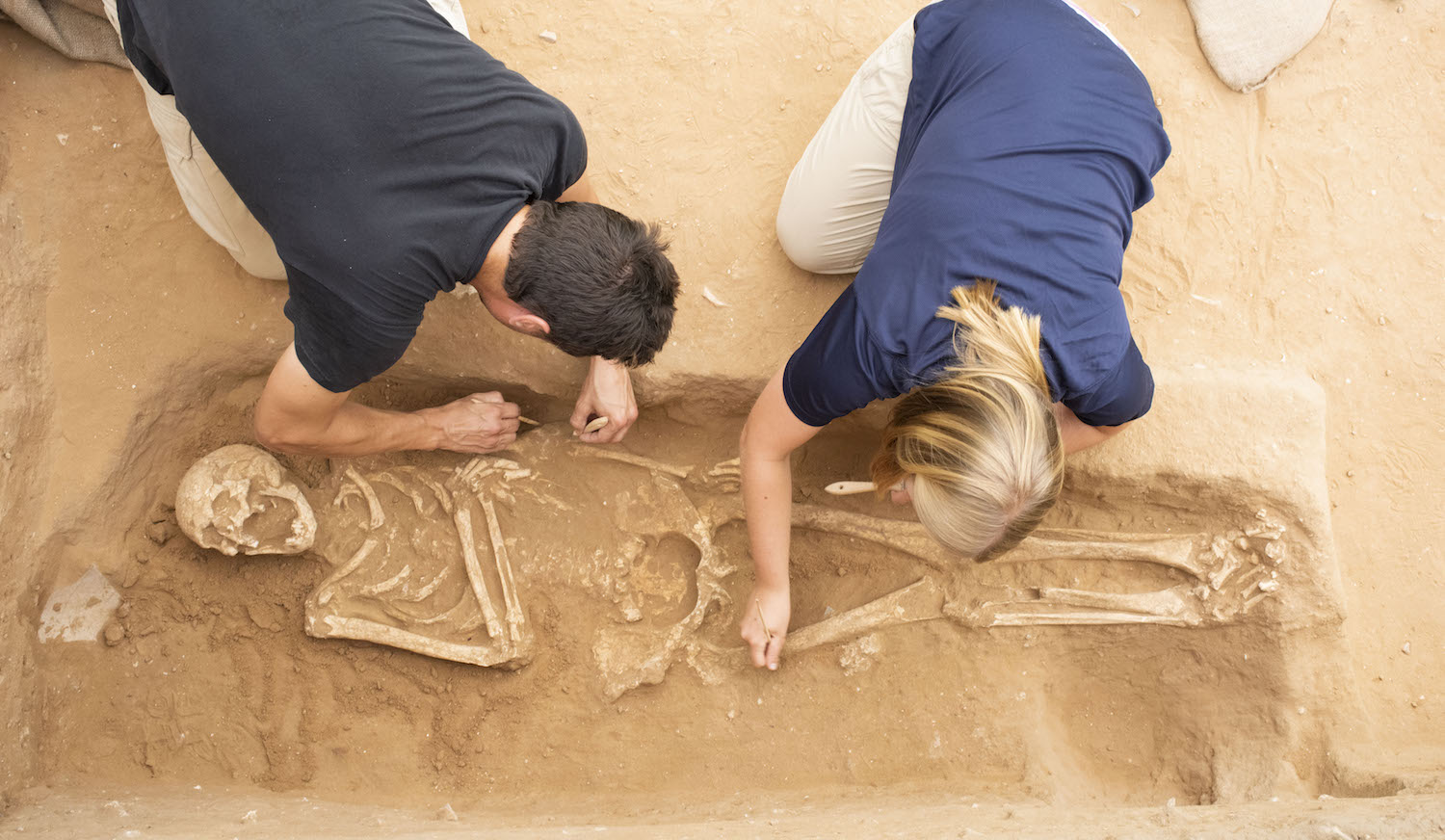Philistines, Biblical Enemies of the Israelites, Were European, DNA Reveals
The ancient Philistines — famous for their appearances in the Hebrew Bible, including the story of David and the giant Philistine Goliath — weren't local to what is now modern-day Israel. Instead, this enigmatic group descended from a group of seafaring Europeans, a new study of ancient DNA finds.
After analyzing the ancient DNA of 10 individuals buried at a Philistine archaeological site, an international team of researchers found that the Philistines descended from people in Greece, Sardinia or even Iberia (present-day Spain and Portugal). These ancestors migrated across the Mediterranean during the late Bronze Age or early Iron age, about 3,000 years ago.
But this European genetic signal was short-lived. Once the Philistines arrived in the southern Levant, an area encompassing the eastern Mediterranean, they intermarried with the locals. "Within no more than two centuries, this genetic footprint introduced during the early Iron Age is no longer detectable and seems to be diluted by a local Levantine-related gene pool," study co-researcher Choongwon Jeong, an archaeogeneticist at the Max Planck Institute of the Science of Human History in Jena, Germany, said in a statement. [Photos: Biblical-Era Cistern and Carvings Discovered in Israel]
Philistine mystery
Historians and archaeologists have spent decades trying to decipher the Philistines' origins. In addition to mentions in the Hebrew Bible (the story of Samson and the Philistine Delilah also mentions the group), the Philistines also appear in texts left behind by the ancient Egyptians. By cross-referencing these Hebrew and Egyptian texts, archaeologists managed to trace the Philistines in time and geography to a region that includes the port city of Ashkelon, in what is now modern-day Israel.

Excavations there revealed a dramatic shift in culture, including in the style of pottery and architecture, between the late Bronze Age and early Iron Age. "They started to resemble findings from archaeological sites that were in the Bronze Age Aegean, so Bronze Age Greece," study lead researcher Michal Feldman, a doctoral student of archaeogenetics at the Max Planck Institute for the Science of Human History, told Live Science. "From this came the theory that the Philistine culture [in the Levant] that appeared during the Iron Age is migrated from Greece."
But not everyone agreed with that theory. Perhaps the locals were merely copying foreign pottery and culture, or maybe the migrants came from elsewhere in Europe, some scientists said. So, study co-researcher Daniel Master, an archaeologist at Wheaton College in Massachusetts who is co-directing the dig at Ashkelon, turned to geneticists to solve the mystery.
Related: Canaanites Live: DNA Reveals Fate of Biblical People
Sign up for the Live Science daily newsletter now
Get the world’s most fascinating discoveries delivered straight to your inbox.
Ancient DNA analysis
The geneticists sampled more than 100 specimens, mainly teeth and inner ear bones, which are both known to be good preservers of ancient DNA. But the researchers got DNA results from only 11 specimens belonging to 10 individuals who lived between 3,600 and 2,800 years ago.
"That's because the eastern Mediterranen, in general, is quite problematic for DNA preservation," Feldman said. "DNA gets degraded over time, and when the environmental conditions are warm and humid, it degrades faster."
But the DNA from the 10 individuals was enough to solve the mystery. When the researchers compared DNA from the earlier, Bronze Age people with DNA from the later, Iron Age Philistines, "we saw they had an ancestral component that the Bronze Age people didn't have," Feldman said. This ancestral component was traced to southern Europe. It's hard to say exactly where in southern Europe, however, as databases of ancient DNA from this time are spotty, Feldman said.

Moreover, the link to southern Europe "doesn't mean that the Philistines [themselves] came from these regions," she added. But the southern European signal is undeniable, so "we can say that the ancestors of the Philistines probably came from southern Europe and arrived into Ashkelon some time either at the end of the late Bronze Age or the beginning of the Iron Age." [In Photos: Pottery Vessel with Pensive Figurine Discovered in Israel]
At that time, in the 12th century B.C., so many empires were collapsing that the period is known as the "early Dark Ages," Feldman said. So, it's no surprise that the Philistines migrated to the Levant, she said.

The study is "fascinating," said Éadaoin Harney, a doctoral student in the Department of Organismic and Evolutionary Biology at Harvard University, who was not involved in the research.
"By sequencing ancient genomes from individuals buried in the city of Ashkelon at different time periods throughout its history, the authors find evidence of a relatively short-lived influx of southern European-related ancestry into the region that emerged during the early Iron Age," Harney said.
This genetic work, in turn, "supports previous archaeological and historical claims that cultural shifts that occurred in the region during the Bronze Age to Iron Age transition were at least in part due to migration," she told Live Science in an email.
The study was published online today (July 3) in the journal Science Advances.
- In Images: The Largest Stash of Gold Coins in Israel
- Stark Beauty: Images of Israel's Negev Desert
- Photos: Unusual Mosaics Decorated Ancient Synagogue in Israel
Originally published on Live Science.

Laura is the archaeology and Life's Little Mysteries editor at Live Science. She also reports on general science, including paleontology. Her work has appeared in The New York Times, Scholastic, Popular Science and Spectrum, a site on autism research. She has won multiple awards from the Society of Professional Journalists and the Washington Newspaper Publishers Association for her reporting at a weekly newspaper near Seattle. Laura holds a bachelor's degree in English literature and psychology from Washington University in St. Louis and a master's degree in science writing from NYU.









